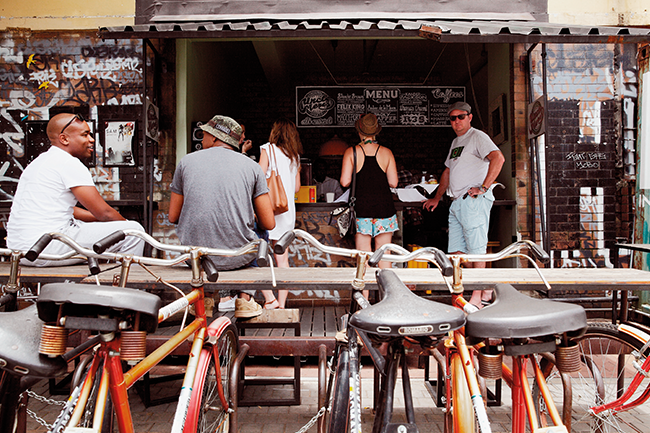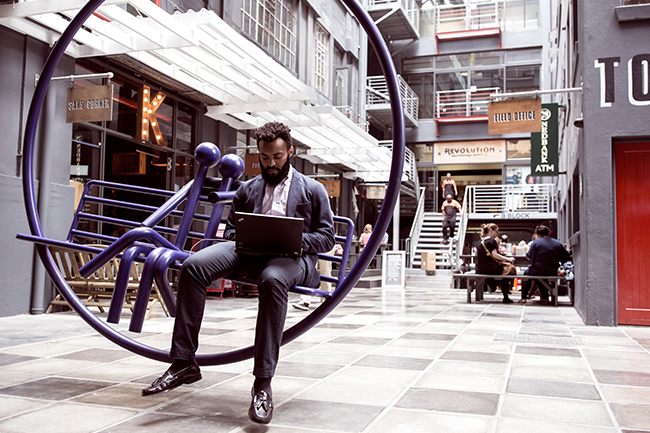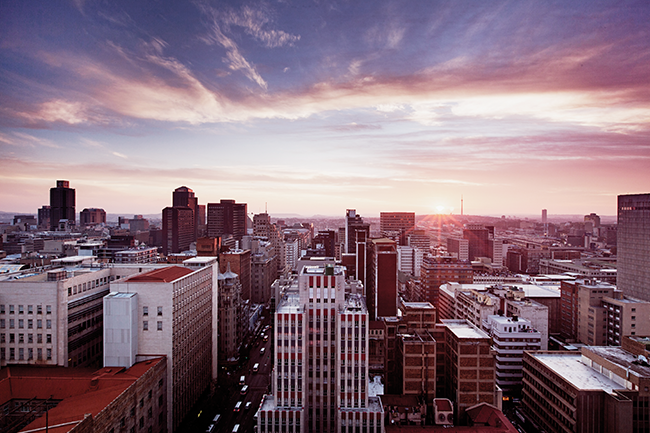Maboneng Precinct, the brainchild of property development group Propertuity, began with a small project called Arts on Main, part of a broader vision that involved revolutionising a portion of Johannesburg’s derelict inner city and incorporating business, housing, creative and community spaces. Now Maboneng is a bustling neighbourhood of fine restaurants and entertainment venues, retail stores and art galleries that also offers office and light industrial space.
Maboneng has proved so successful that its blueprint is being echoed in Rivertown in Durban, KwaZulu-Natal, and is proof, developers say, that there is a thirst for integrated inner-city community living in other urban areas of South Africa.
Meanwhile, in Cape Town, inner-city rejuvenation has been well under way for many years already, with areas such as Woodstock, Green Point, Strand and the Foreshore all receiving plenty of attention – and investment.
City Property manages several buildings in Pretoria and Johannesburg that have undergone regeneration, including a spectacularly restored historic building, Tudor Chambers, on Helen Joseph Street in Pretoria. Jeffrey Wapnick, MD of City Property, says the company has been involved in rejuvenating Gauteng’s inner cities since the early nineties. ‘We need to continuously breathe life back into the city to keep it alive. We have to make it relevant and sustainable going into the future. We see our initiatives as a catalyst for others to regain investor confidence,’ he says.
Pieter Niehaus, head of property at Norton Rose Fulbright, says that inner-city rejuvenation encompasses multiple concepts. ‘You are trying to rejuvenate the city by making it more sustainable and essentially converting it into what is termed a “smart city” to fit in with modern times,’ he says. ‘Another aspect is the focus to prevent urban decay and urban sprawling.’
According to UN Habitat’s 2016 World Cities report, cities are home to 54% of the world’s population, though this figure is likely to rise to 66% by the middle of this century. Joan Clos, UN under-secretary-general and executive director of UN Habitat, writes in the report that the growth of the world’s cities is ‘ingrained in a culture of short-term economic benefit and often unbridled consumption and production practices that compromise the sustainability of the environment’. While urbanisation is essential for socio-economic transformation, he says, the world’s current model of urbanisation has become highly unsustainable. ‘The emerging future of cities largely depends on the way we plan and manage urbanisation, and the way we leverage this transformative process to provide the setting, the underlying base and also the momentum for global change.’

When dealing with rejuvenation and redevelopment, a holistic approach needs to be taken, says Niehaus. ‘One of the things that any planning or rejuvenation initiative needs to take into account is the immense pace at which urbanisation is happening,’ he says. ‘Inner-city rejuvenation needs to be done in such a way that it accommodates this rapid rate of urbanisation.’
According to Niehaus, to rejuvenate an inner city properly, you need to combine infrastructure development, social development of communities, and sustainable development in relation to environmental considerations. ‘It’s no use just slapping on a coat of paint and fixing the plumbing and electrics in an old building. You need to look at something that is going to be sustainable and that will not follow the same route as the building did in 10 or 20 years’ time,’ he says.

Niehaus adds that a properly rejuvenated and redeveloped city centre has plentiful benefits, and will make people want to live there because it is a structured environment where residences, businesses, clinics, schools and outdoor activities in parks are all accessible, benefiting the community at large. Therefore, it’s imperative to have an integrated development plan that is properly executed.
As part of this urban renewal, it is not only buildings that are being made over. Niehaus says this benefit is evident across the globe, and is also being done at an agricultural-development level, such as in Cape Town, with the Oranjezicht City Farm. ‘So, it’s looking at the peri-urban developments too. Those things are brilliant for the community as a whole, not only because this creates jobs but because it creates food security and entrenches a trend towards sustainable development,’ he says.
Pretoria architect Carla Taljaard believes it is important to have people living in city centres for reasons of sustainability. Taljaard is the project co-ordinator of Cool Capital, an uncurated, DIY, guerrilla biennale (loosely defined as a large-scale art and design event held every two years) that touts itself as ‘a place for the citizens of the capital city to collectively contemplate and express why we love our city, and how we can improve it’.
Taljaard says it is projects such as this that will help bring a mix of people back into the inner city – in this case Pretoria – and encourage them to want to call it home. Choosing to live in a city’s CBD has a lot to do with perception, she says. ‘It’s about getting people to say “yes, this is my home” and to be passionate about it. It’s important to create and nurture these positive feelings in residents.’
Cool Capital, a citizen-driven initiative, held its first event in Pretoria in 2014 and the second in 2016. The next instalment is due in 2018. As an uncurated project, all citizens of the city are able to contribute, creating art and design installations in the public domain. The installations are also documented and compiled into a magazine. ‘The idea is to get people to re-image and rethink how they, as citizens of the city, can improve their environment,’ says Taljaard, adding that in addition to cultivating a sense of passion and pride in their city, the initiative also helps to market the city as an interesting and creative centre to other citizens of South Africa and to the international community.
‘People like the idea that they can contribute meaningfully,’ she says.

Asked how such an initiative fits into inner-city rejuvenation, Taljaard says that people who live and work in a space have a good idea of where the potential lies for making a big impact. ‘Citizens have a place and they should own that place. Instead of waiting for the city council to do something, we say take the initiative and do something small that can become a catalyst for a much bigger discussion. In the CBD, you generally have a lot of apathy. Getting people who live in those areas to creatively engage with the space is what makes cities nice to live in – that culture, vibe and spirit. That has to do with the people who love the city and want to contribute to the space.’
With regard to which cities in Africa have seen successful rejuvenation, Niehaus cites Maputo as a successful example. ‘Maputo has reclaimed some of its attractions to tourists after many years of civil war in Mozambique. They’ve done well,’ he says.
‘The same applies to several East African countries that have had good political stability over the years. Consider Nairobi, Mombasa and Dar es Salaam – these cities are really benefiting from external influences and international interest in what they have to offer. We also shouldn’t discount cities like Luanda and Lusaka. While they’ve not had the benefit of foreign direct investment for many years, they are catching up as the countries have piqued the interest of development finance institutions and global energy, mining, telecommunications and commodity companies.’
Looking to the future, as far as further rejuvenation and development goes, Niehaus says the emphasis should be on ensuring that whatever planning regime exists in a particular country, that this is focused on ensuring cities keep pace with what is happening globally. ‘It’s no use building a brick house if it’s going to be more sustainable to build it with different materials, or if it’s going to be a city relying on telephone lines when the entire world is running on fibre,’ he says. ‘Your plan needs to take into consideration sustainability and smart city initiatives.’


